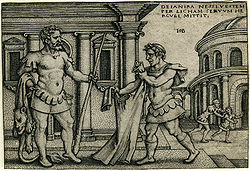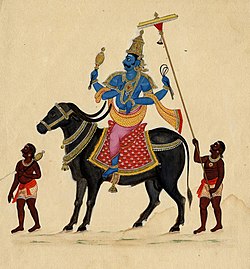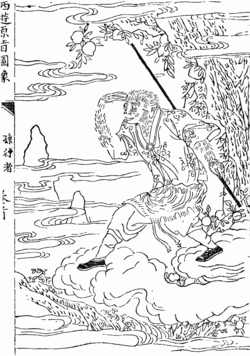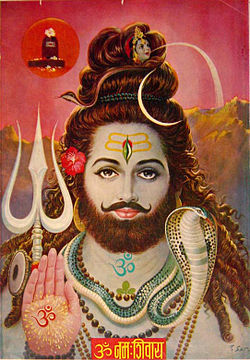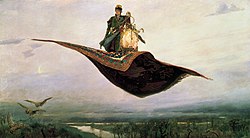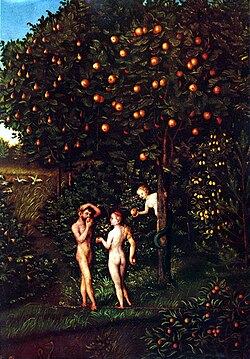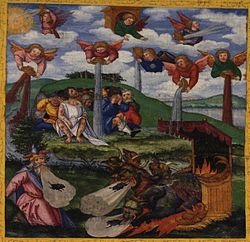This article needs additional citations for verification .(June 2017) |

Mythological objects encompass a variety of items (e.g. weapons, armor, clothing) found in mythology, legend, folklore, tall tale, fable, religion, spirituality, superstition, paranormal, and pseudoscience from across the world. This list is organized according to the category of object.
Contents
- Armor
- Armor 2
- Helmets
- Shields
- Gauntlets
- Clothing
- Crowns
- Belts
- Gloves
- Veils
- Caps and hats
- Garments
- Footwear
- Outerwear
- Pants and shirts
- Weapons
- Swords
- Pole weapons
- Whips
- Daggers
- Axes
- Hammers
- Bow and arrows
- Crossbows
- Projectile weapons
- Hooks
- Jewelry
- Necklaces
- Rings
- Gemstones
- Stones
- Vehicles
- Airborne
- Vimana from Hindu mythology
- Chariots
- Ships
- Trains
- Unidentified flying objects
- Treasures
- Relics
- Books
- Cauldrons
- Botany
- Plants and herbs
- Trees
- Foods
- Drinks
- Fruits
- Eggs
- Substances
- Substances from Greek mythology
- Substances from Norse mythology
- Substances from Medieval legend and European folklore
- Substances from Mesoamérican mythology
- Substances from Asian mythology
- Musical instruments
- Conchs
- Drums
- Flutes
- Harps
- Horns
- Lyres
- Rattles
- Trumpets
- Springs
- Furniture
- Ropes and chains
- Body parts
- Heads
- Eyes
- Limbs
- Hair, feathers and skin
- Blood and flesh
- Bones and horns
- Organs
- Containers
- Bags
- Cups and chalices
- Lamps and lanterns
- Sculptures
- Mirrors
- Dispensers
- Bridges
- Columns
- Gates
- Nets
- Weighing scales
- Sharpening stones
- Wheels
- Buildings
- Wings
- Astronomical objects
- Torture devices
- Tools
- Miscellaneous
- From Greek mythology
- From Norse mythology
- From Germanic heroic legend
- From Christian mythology
- From Hindu Mythology
- From the Book of Mormon
- Explanatory notes
- References
- External links








